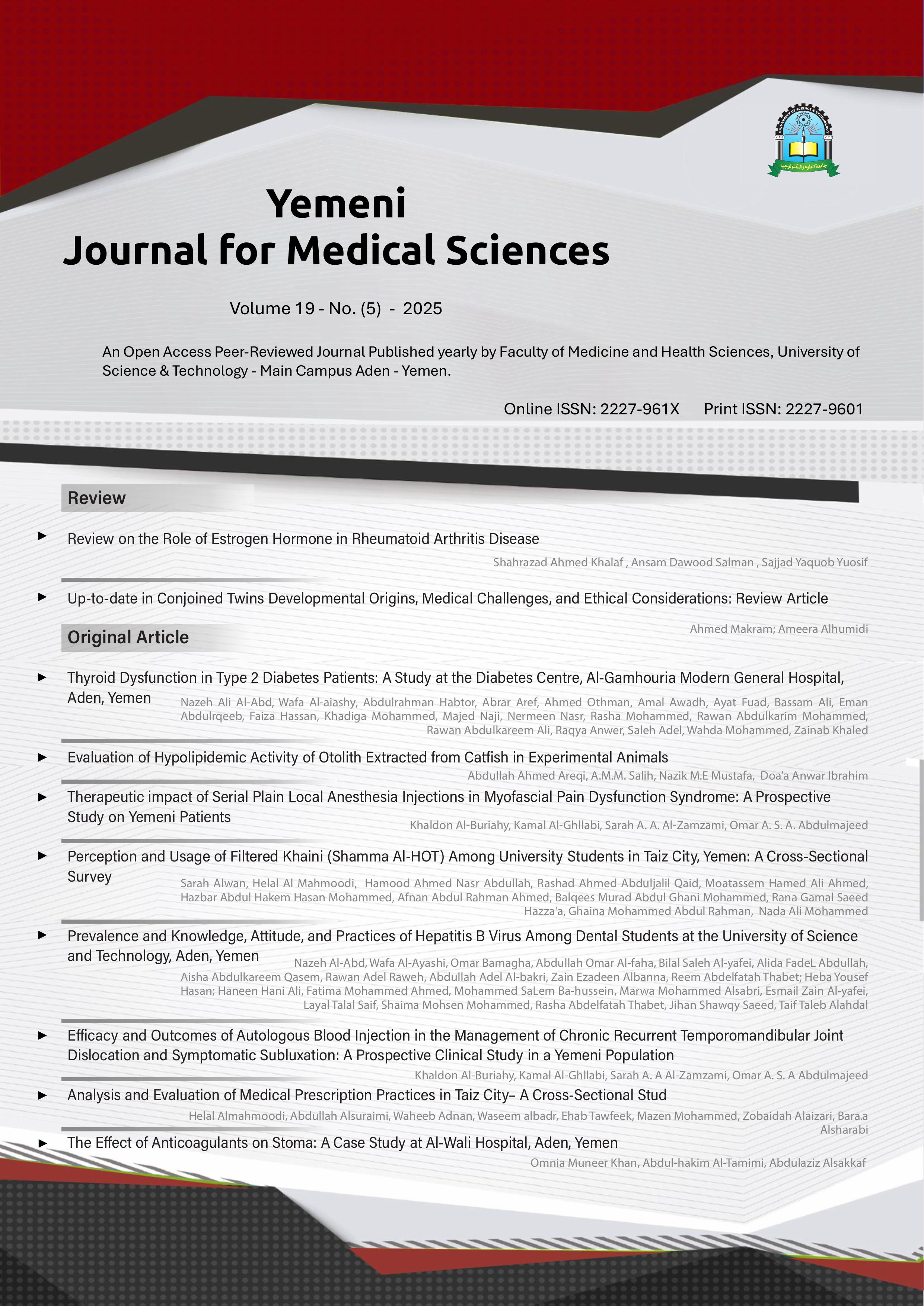Therapeutic impact of Serial Plain Local Anesthesia Injections in Myofascial Pain Dysfunction Syndrome: A Prospective Study on Yemeni Patients
##plugins.themes.bootstrap3.article.main##
Abstract
Objective: This prospective study aimed to evaluate the efficacy of a standardized plain local anesthesia injection protocol in managing pain and functional symptoms in patients diagnosed with Myofascial Pain Dysfunction Syndrome (MPDS), with a secondary focus on outcomes in cases complicated by symptomatic temporomandibular joint (TMJ) dislocation.
Method: A prospective analysis was conducted on 20 patients (17 females, 3 males; mean age 30.2 years) presenting with MPDS symptoms, including radiation pain headaches, active trigger points, and neck & shoulder/otalgia, who underwent a structured treatment regimen. The protocol comprised three plain local anesthesia injections over two weeks (two injections in the first week, one in the second). Patients with TMJ symptomatic subluxation (n=10) received adjunctive ABI therapy. Pain severity was assessed using the Visual Analog Scale (VAS) at baseline, post-treatment, and follow-ups (3 weeks, 3 months, 6 months).
Results: Significant pain reduction was observed across all patients. Initial VAS scores (7–10/10) decreased to 2–3/10 after the first week and further declined to 0–1/10 post-treatment. Complete pain resolution (0/10) was achieved in 90% of cases by the second week, while two patients (10%) reported residual pain (1/10). Patients with TMJ dislocation showed comparable pain reduction but required extended adjunct therapy. Functional outcomes, including mouth opening and mandibular mobility, remained stable or improved in 95% of cases.
Conclusion: Plain local anesthesia injections provide rapid and sustained relief for MPDS-related pain, with high efficacy in uncomplicated cases and in complex cases that are secondary to TMJ involvement. TMJ involvement necessitates adjunct therapies, emphasizing the importance of individualized management. This protocol demonstrates promise as a first-line intervention, though long-term studies are needed to validate durability and compare alternative approaches.
##plugins.themes.bootstrap3.article.details##
Myofascial Pain Dysfunction Syndrome, trigger point therapy, local anesthesia, TMJ dislocation, pain assessment, VAS

This work is licensed under a Creative Commons Attribution 4.0 International License.
YJMS publishes Open Access articles under the Creative Commons Attribution (CC BY) license. If author(s) submit their manuscript for consideration by YJMS, they agree to have the CC BY license applied to their work, which means that it may be reused in any form provided that the author(s) and the journal are properly cited. Under this license, author(s) also preserve the right of reusing the content of their manuscript provided that they cite the YJMS.








